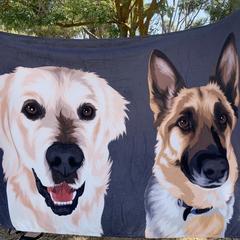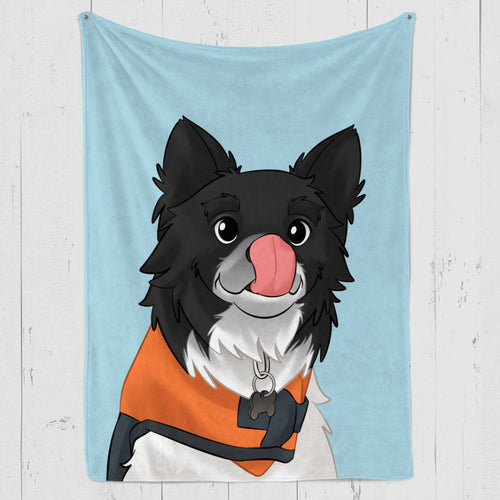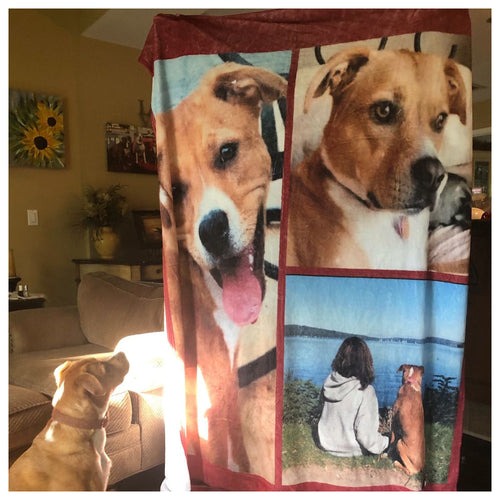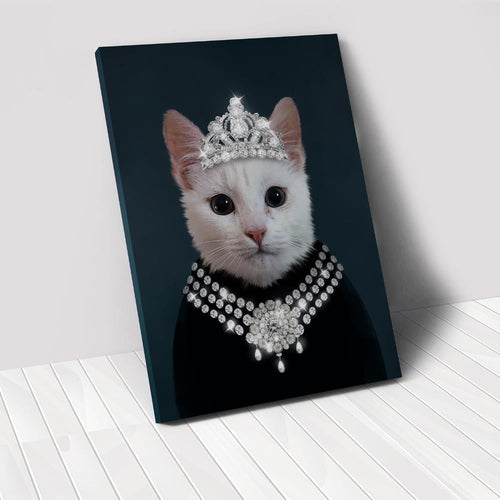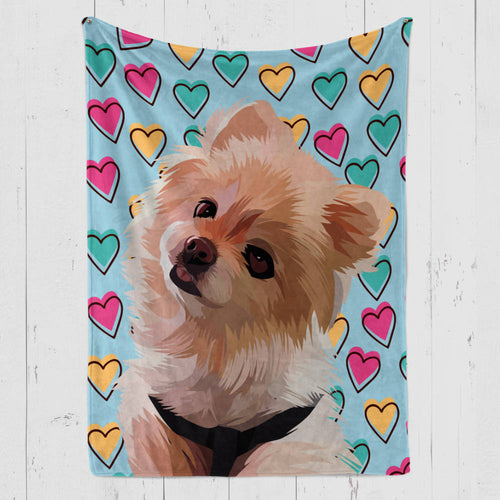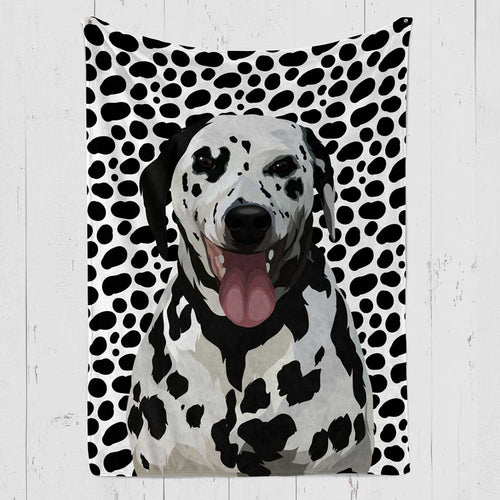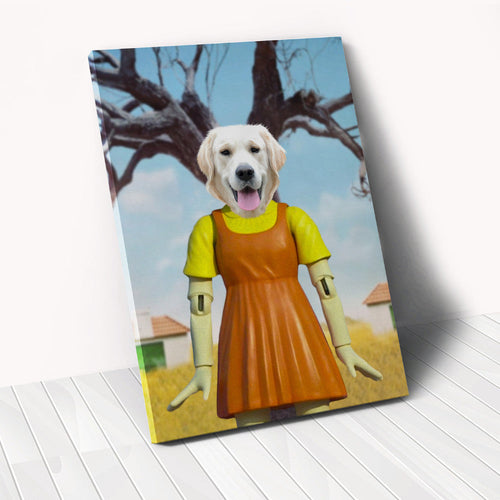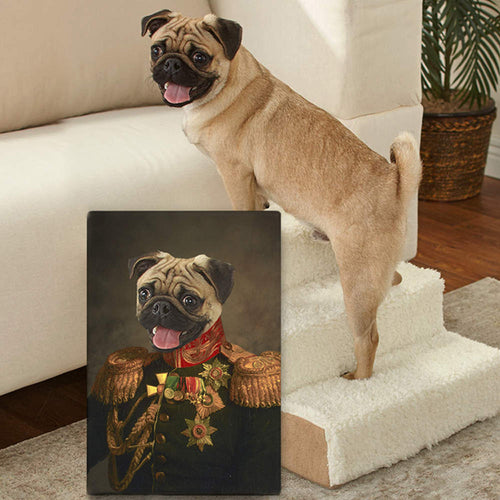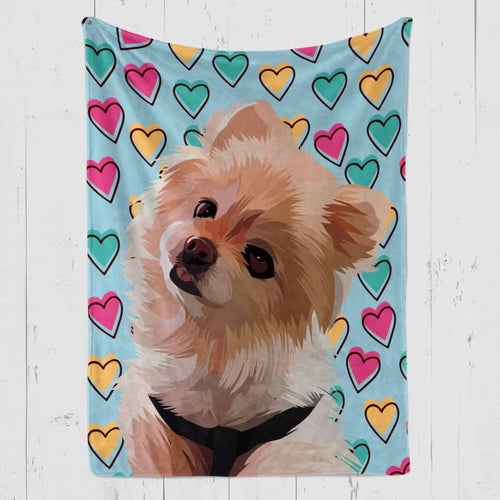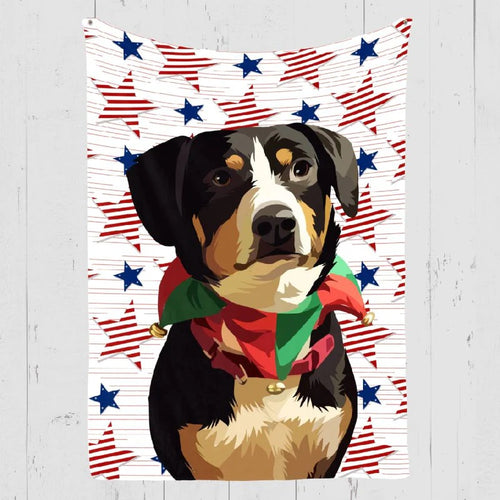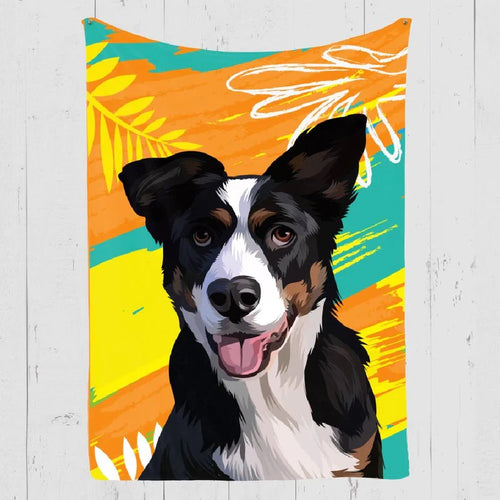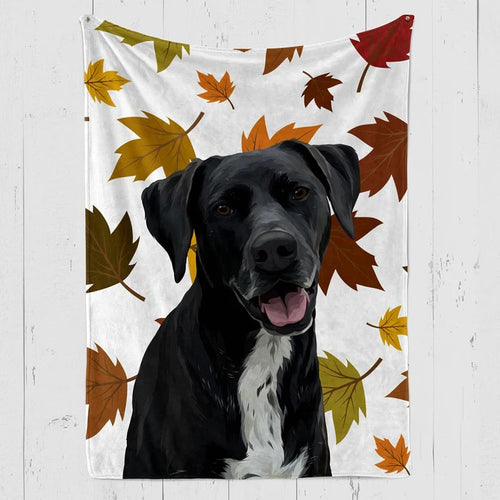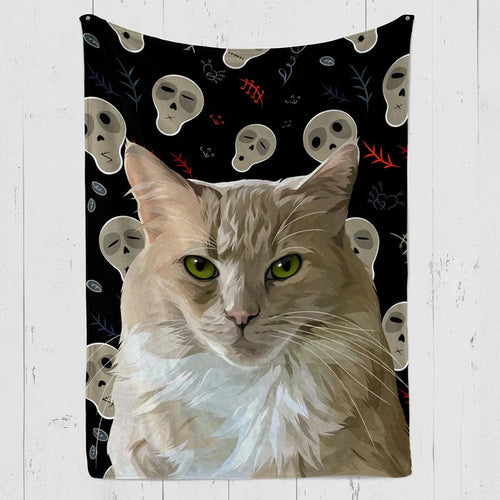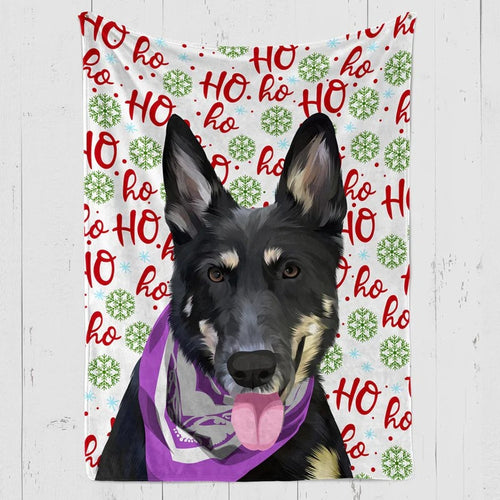
Dog covers, and bedding should be washed weekly to assist with scent evacuation. If you and your dog share a bed, you should use separate sheets and blankets for your dog and yourself. In addition, if your dog likes to swim or has been outside in the rain, you are aware of the distinctive "wet dog" smell that can permeate every location, particularly his bed, which is why washing the dog bed is necessary.
Why Should You Wash Your Dog’s Bed? How?
One should wash the Dog bed for hygiene purposes. Knowing how to wash a dog bed that is large, comfortable, covered in fleece and made of memory foam is a little trickier if your dog sleeps in one of those all day long. You might try and ponder, "Could I at any point wash my dog bed?" Dog beds may be too big and bulky to fit in your washing machine. So here are a few tricks about how it's done:
1. Vacuuming your dog bed to remove hair, dirt, and other debris can help you prepare for washing.For drying instructions, refer to the label from the manufacturer. If it can be tumble-dried in your dryer, do not use dryer sheets and keep the temperature low. If not, wash the bed on a day with more sunshine and hang it outside to dry in the sun and breeze.
How Frequently Would it be a Good Idea for You to Wash the Bed?
A dog bed's condition is your best guide, but some health experts recommend vacuuming it once a week and washing it once a month. Put together your cleaning supplies when it's soiled, muddy, or has been at an accident or spill scene.
When the bed is dry, keep it immaculate and crisp smelling. Often sprinkle it with baking pop, let it stand for thirty minutes, then, at that point, vacuum or neuter and wipe the bed with a balance of vinegar and warm water. Use a dog-safe stain remover for spot cleaning to treat new stains as soon as they appear. Use an inner liner to protect the bed mattress if the cover is removable.
How To Hand Wash A Dog Bed To Remove Odor?
The most effective method to hand wash your little guy's bed Sadly, not all canine beds are machine launderable. However, you can still thoroughly clean your dog's bed by hand. Follow this procedure:
1. Use a vacuum, lint roller, or a firm shake outside to get rid of as much dirt and hair as you can, just like you would with a machine-washed bed.
2. Stains should be spot-cleaned in advance. Although a washer can remove stains without pretreatment, you should pretreat them with an enzyme cleaner and a clean towel before hand washing. It is safe to use this bio-enzymatic blend in the home on carpets, bedding, and other surfaces despite its ability to remove powerful odours. In addition, the scent of freshness is manageable.
3. Give it a good soak: Submerge and soak all bedding in warm, soapy water for at least 15 minutes. You don't maintain that the heated water should consume your hands, yet it ought not to be cold by the same token. For best results, turn the bed over multiple times and ensure the detergent water covers the entire surface. Small dog beds can be made in a sink or a plastic bin, but large dog beds might need a tub.
4. Wash thoroughly: A decent guideline is to flush the canine bed in cool water until the water runs clear of all cleanser buildup or air pockets. When you finish washing, press the additional water decently well before drying.
5. Follow the instructions for drying: Just like when washing by machine, check the label to see if you can use a low-heat dryer. If not, hold tight to a drying rack or untruth level someplace it can air dry. If you use your dryer, you should clean the lint trap as soon as possible.
How to Clean Dog Bed With Urine and Other Stains?

There are nine key steps to cleaning a dog bed with urine. These include:
1. Move the Bed to a Fitting Work area:
Put on your elastic gloves and facial covering. Move the bed away from other fabrics and surfaces where you won't have to worry about urine soaking into them. The last thing you want is to spread the smell around your home or get it on your skin, so the best area to handle this undertaking may be outside or in your bath.
2. Pre-treat the Outside Cover With an Enzymatic solution:
A pet-safe, catalyst-based stain and scent remover can eliminate pee and different stains and smells from your canine's bed blanket. Besides making the dog bed look better, it is also perfect for your dog. Several products on the market remove stains and odours, some made just for animal urine. Online retailers, pet stores, and veterinarian offices carry these safe products. This item is infinitely better than commonplace pre-treatment fluids, which frequently contain alkali and chlorine, which can bother your dog's skin and aviation routes. Rather than depending on harsh synthetics, dynamic catalysts take out pee stains and artificially kill scents instead of concealing them with aroma. A catalyst-based stain and smell remover will limit your canine's possibilities of fostering a skin response.
3. Remove the Covers:
If you have covers that can be removed, you're off to a great start. Most high-quality dog beds have an unzipped exterior cover that can be washed. Cleaning a dog bed like this will be quicker and more straightforward than cleaning other mattresses. Track down the zipper on your canine's bed and cautiously eliminate the cover. If you have covers that cannot be removed, consider getting a waterproof cover or liner to make it easier to clean up after future accidents.
4. Soak the Canine Bed:
Soak the dog bed in detergent, then splash the removable cover and the dog bed in foamy water. Ensure the detergent is safe for pets to use so your dog doesn't get skin problems. Soak the bed for anywhere from thirty minutes to one hour. On the off chance that conceivable, absorb all your clothes washer — it will hold things back from getting more chaotic than they should be. Use warm water to remove the smell from your dog's bed if the care instructions allow it.
5. Put the Bed and Covers in the Washing Machine:
While some dog beds can be washed by hand, others can be washed in the machine. If yours can be washed in the washer, use a detergent that is safe for pets. Talk to your vet if you need help deciding which detergent to use. Natural cleansers are, for the most part, protected. Consult the care label of your dog bed before selecting the most vigorous option you can safely use.
6. Thoroughly Rinse the Dog Bed:
After laundering, ensure the dog bed is thoroughly rinsed to remove all detergent. Detergent can irritate the skin and respiratory tract even if it isn't toxic. Run a second rinse cycle if you have time. Assuming you do this, there ought not to be any synthetic buildup abandoned.
7. Add Baking Soft drink to the Flush Cycle (Discretionary):
Stay away from substance dryer sheets and wash your canine's covers with baking pop, assuming that you believe that they should be delicate. Before this final rinse, you can directly add 1/2 cup of baking soda to the drum of the washing machine. It will not only mellow the texture, but it will also assist the aerating with handling.
8. Dry the Bed and Covers:
Drying can be done with an air dryer or according to the manufacturer's instructions. Allow the bed to air dry in the sun for 10 to 15 minutes before putting it in the dryer to ensure it is scorched. Whatever strategy you pick, ensure no clamminess stays before returning to your canine's bed. Indeed, even a small measure of dampness on the inside can cause contagious issues that can cause severe skin and respiratory circumstances.
9. Air Your Dog's Bed (Optional):
Sunshine and fresh air can also assist in rapidly eliminating urine odors. Put your canine bed out in the daylight for a few hours on a bright day as UV beams from the sun dispense with scent-causing microscopic organisms, leaving your canine bed smelling new once more.
How to Keep Your Pet's Bed Clean
1. Put a sweeping or Blanket over your bed:
At the degree when your pet's hair is turning into a problem in your bed, consider dissipating a wool cover or knitted quilt over your bedding. Because most of your pet's fur will accumulate on these rather than all over your luxurious comforter or duvet cover, they will provide an additional layer of protection.
2. Choose the Right Fabric and Thread Count:
Some bedding materials and fabrics are better suited to pets than others. While some types of fabric look like sheets that keep dog hair out, others will attract dust and hair. So, which duvet cover for dog hair is best? The best bedding for preventing pet hair has a high thread count for durability and instructions for machine washing that make cleaning simple and convenient.
3. Keep Spare Sheets Convenient:
One more smart thought to keep your bedding clean is to keep a couple of additional arrangements of sheets close by. They can be used when your current set is being washed or when accidents with soiling necessitate a quick change of sheets.
4. Properly Wash Your Bedding Regularly:
If you don't want to switch to new bedding made of less hair-attracting material, you may need to increase the frequency with which you clean your bed to keep it odour-free and spotless.
5. Vacuum Your Bedding:
You can vacuum in the middle between washes to keep it clean. Run the vacuum over your bed linens with the brush attachment. After each session, empty the dust cup or vacuum bag to ensure maximum suction.
6. Utilising a lint roller:
Utilising a sticky lint roller or a clothing brush to remove loose hairs and fur is another way to keep your bedding clean between washes. Before you use your lint roller or brush to clean it thoroughly, you can use an anti-static spray to loosen any hair still attached.
7. Utilising rubber gloves:
Using rubber dishwashing gloves is a valuable trick for removing pet hair.
- Wipe the surface of your bedding with care while wearing rubber gloves
- As you rub the gloves across the texture, you will make static which can get stray hairs.
- Alternatively, lightly dampen the gloves with water before running the gloves over your linens. This might draw in more hair than dry gloves.
- Rinse the gloves off after they are covered in fur, then repeat.
8. Wash and Brush Your Pet Often:
You shouldn't simply zero in on your bedding - you also want to clean your pet! Bath your pet regularly to get rid of the dirt that builds up on its body every day, according to your veterinarian's recommendations for your pet's breed. Regular baths actively remove dead skin and hair, reducing sadness and maintaining a clean and healthy coat for your pet.
9. Use patterned or printed bedding:
This is more of a disguise than a cleaning tip. If you're not oversensitive to pet hair, or you wouldn't fret about pet hair on your bed for however long it's not excessively apparent, you can select designed and printed sheets, quilts, and duvet covers.
How Often Should You Wash A Dog Bed?

To keep the bad stuff out, pet bedding should be washed once a week, if not more often than our human bedding. Pets can’t be cleaned as frequently as people, so guaranteeing their bedding is in top condition can assist with staying away from terrible stenches as well!
We recommend using a spray disinfectant safe for pets and vacuuming or removing hair from your pet's bed as frequently as possible between washes to freshen it up. Additionally, this is useful for areas of your pet bed that cannot be soaked or machine washed.
Frequently Asked Questions
How to wash the foam in a dog bed?
Step 1: Use the side zipper to remove the outside cover from the foam bed.
Step 2: Place the cover in the clothes washer and set the temperature to cold. Turn on the machine, add a scoop of laundry detergent, and
Step 3: Add warm water to a half-full bathtub. To the water, add a small scoop of laundry detergent. Because brushes will harm the foam, wash the soapy water with your hands.
Step 4: Replace the soapy water in the tub with pure water and empty it. Clean the foam bed with water. You should press the froth a few times to get the cleanser out. Simply chip away at it with your hands until there are no more bubbles.
Step 5: To dry, take the cover and the foam mattress outside to the sun. Due to the possibility of shrinkage, you should avoid drying the cover in the dryer. Then you would need the option to fit the froth back in the cover.
Stage 6: Place the froth back within the cover and zip it up.
How do you deodorise a dog bed you can’t wash?
Each week, use a solution of one cup of distilled white vinegar and one tablespoon of water to clean the fabric of your dog's bed. Once a week, expose your dog's bed to direct sunlight to eliminate odours and bacteria. Sprinkle baking soft drink over the canine bed when it smells, and vacuum it up.
Is washing the dog bed in a washing machine okay?
Wash your dog's bed cover in the washing machine with the warmest water temperature permitted by the care tag while using a gentle detergent that is safe for pets. Make sure to pick a cycle that aligns with the guidelines on the consideration tag.
Conclusion:
The procedure for cleaning a pet's bed is the same whether you have a cat or a dog. It's ideal to wash your pet's bed about once each week to keep your home new and clean with fewer microbes. You'll need to painstakingly adhere to any focus directions on your pet bed to save its shape and surface and try not to harm the texture. You can use specialised stain treatment methods on more tough pet messes. Your pet's bed can last many more dog naps with extra care and attention.
Web Resources
Bearaby.com
https://bearaby.com/blogs/the-lay-low/how-to-wash-a-dog-bed
Shophiddin.com
https://shophiddin.com/blogs/news/how-to-wash-a-dog-bed
Recommended Articles :
- Why Do Dogs Dig In Bed?
- How To Protect Your Bed From Your Dog?
- Why Does My Dog Like To Sleep Under The Covers?
- Do Dogs Like Being Cuddled In Blankets?
Latest Review on Woof Blankets
To have such a masterpiece by my side every day is a gift for me and my memories with Rex. Thank you WoofBlankets for such an opportunity to recreate his image on a blanket.Lara o’ Miguel US, California

COLLECTION WORTH EVERY PENNY
BEST SELLERS
-
Woofy Single Color Custom Pet Blanket
![Woofy Single Custom Pet Blanket – Woof Blanket]()
- -41%
BlanketsSHOP NOW- Regular price
- from $64.95
- Sale price
- from $64.95
- Regular price
-
$109.95 - Unit price
- per
Sold out -
Exclusive Christmas Custom Pet Blanket
![Exclusive Custom Pet Blanket]()
- -39%
BlanketsSHOP NOW- Regular price
- from $69.95
- Sale price
- from $69.95
- Regular price
-
$114.95 - Unit price
- per
Sold out -
Christmas Custom Pet Blanket
![Christmas Custom Pet Blanket - Custom Dog Blankets]()
- -40%
BlanketsSHOP NOW- Regular price
- from $69.95
- Sale price
- from $69.95
- Regular price
-
$115.95 - Unit price
- per
Sold out -
Watercolor Pet Portraits
![]() SHOP NOW
SHOP NOW- Regular price
- from $59.95
- Sale price
- from $59.95
- Regular price
-
- Unit price
- per
Sold out -
Woofy Christmas Custom Dog Blanket
![Woofy Christmas Custom Dog Blanket]()
- -39%
BlanketsSHOP NOW- Regular price
- from $69.95
- Sale price
- from $69.95
- Regular price
-
$114.95 - Unit price
- per
Sold out -
Modern Pet Owner Portrait
![]()
- -32%
CanvasSHOP NOW- Regular price
- from $84.95
- Sale price
- from $84.95
- Regular price
-
$124.95 - Unit price
- per
Sold out -
Woof Splash Custom Pet Blanket
![Woof Splash Custom Pet Blanket]()
- -39%
BlanketsSHOP NOW- Regular price
- from $69.95
- Sale price
- from $69.95
- Regular price
-
$114.95 - Unit price
- per
Sold out -
The Admiral - Custom Pet Portrait
![The Admiral - Custom Pet Portrait Online]()
- NEW
- -25%
CanvasSHOP NOW- Regular price
- from $59.95
- Sale price
- from $59.95
- Regular price
-
$79.95 - Unit price
- per
Sold out -
Wings of Loyalty - Custom Pet Portrait
![]()
- NEW
CanvasSHOP NOW- Regular price
- from $59.95
- Sale price
- from $59.95
- Regular price
-
- Unit price
- per
Sold out -
Pet Memorial Custom Photo Collage Blanket
![Personalized pet memorial quilt with photos]()
- -41%
BlanketsSHOP NOW- Regular price
- from $64.95
- Sale price
- from $64.95
- Regular price
-
$109.95 - Unit price
- per
Sold out -
Celestial Paws - Custom Pet Portrait
![]() CanvasSHOP NOW
CanvasSHOP NOW- Regular price
- from $59.95
- Sale price
- from $59.95
- Regular price
-
- Unit price
- per
Sold out -
The Loyal Soul - Custom Pet Portrait
![]()
- NEW
SHOP NOW- Regular price
- from $59.95
- Sale price
- from $59.95
- Regular price
-
- Unit price
- per
Sold out -
Cartoonized Pet Portraits (New)
![Cartoonized Pet Custom Portraits Online]()
- -36%
SHOP NOW- Regular price
- from $59.95
- Sale price
- from $59.95
- Regular price
-
$93.95 - Unit price
- per
Sold out -
The French Sailor - Custom Pet Portrait
![]()
- -25%
CanvasSHOP NOW- Regular price
- from $59.95
- Sale price
- from $59.95
- Regular price
-
$79.95 - Unit price
- per
Sold out -
The Policeman - Custom Pet Portrait
![]()
- NEW
- -25%
CanvasSHOP NOW- Regular price
- from $59.95
- Sale price
- from $59.95
- Regular price
-
$79.95 - Unit price
- per
Sold out -
The General - Custom Pet Portrait
![]()
- NEW
- -25%
CanvasSHOP NOW- Regular price
- from $59.95
- Sale price
- from $59.95
- Regular price
-
$79.95 - Unit price
- per
Sold out -
Woof Love Custom Pet Blanket
![Woof Love Custom Pet Blanket]()
- -39%
BlanketsSHOP NOW- Regular price
- from $69.95
- Sale price
- from $69.95
- Regular price
-
$114.95 - Unit price
- per
Sold out -
Summer Time Custom Pet Blanket
![Summer Time Custom Pet Blanket]()
- -39%
BlanketsSHOP NOW- Regular price
- from $69.95
- Sale price
- from $69.95
- Regular price
-
$114.95 - Unit price
- per
Sold out -
The Ambassador - Custom Pet Portrait
![The Ambassador - Custom Pet Portrait Online]()
- NEW
- -25%
CanvasSHOP NOW- Regular price
- from $59.95
- Sale price
- from $59.95
- Regular price
-
$79.95 - Unit price
- per
Sold out -
Fall In Love Custom Pet Blanket
![Fall In Love Custom Dog Blanket]()
- NEW
- -39%
BlanketsSHOP NOW- Regular price
- from $69.95
- Sale price
- from $69.95
- Regular price
-
$114.95 - Unit price
- per
Sold out -
The Classy Lady - Custom Pet Portrait
![The Classy Lady]()
- NEW
- -25%
CanvasSHOP NOW- Regular price
- from $59.95
- Sale price
- from $59.95
- Regular price
-
$79.95 - Unit price
- per
Sold out -
The Duke - Custom Pet Portrait
![The Duke - Custom Pet Portrait]()
- NEW
- -25%
CanvasSHOP NOW- Regular price
- from $59.95
- Sale price
- from $59.95
- Regular price
-
$79.95 - Unit price
- per
Sold out -
Dog In Suit- Custom Pet Portrait
![Dash Dog In Suit- Custom Pet Portrait Online]()
- NEW
- -25%
CanvasSHOP NOW- Regular price
- from $59.95
- Sale price
- from $59.95
- Regular price
-
$79.95 - Unit price
- per
Sold out -
The Princess - Custom Pet Portrait
![]()
- NEW
- -25%
CanvasSHOP NOW- Regular price
- from $59.95
- Sale price
- from $59.95
- Regular price
-
$79.95 - Unit price
- per
Sold out -
Modern Pet Portrait with One Mug
![Modern Pet Portrait with One Mug]()
- -25%
Print MaterialSHOP NOW- Regular price
- from $99.95
- Sale price
- from $99.95
- Regular price
-
$133.95 - Unit price
- per
Sold out -
The Aristocrat - Custom Pet Portrait
![The Aristocrat - Custom Pet Portrait At Best Price]()
- NEW
- -25%
CanvasSHOP NOW- Regular price
- from $59.95
- Sale price
- from $59.95
- Regular price
-
$79.95 - Unit price
- per
Sold out -
Single Color Custom Blanket with 1 Mug
![Single Color Custom Blanket with 1 Mug]() BlanketsSHOP NOW
BlanketsSHOP NOW- Regular price
- from $99.95
- Sale price
- from $99.95
- Regular price
-
- Unit price
- per
Sold out -
Single Color Custom Blanket with 2 Pillows
![Single Color Custom Pet Blanket with 2 Pillows]()
- -21%
BlanketsSHOP NOW- Regular price
- from $99.95
- Sale price
- from $99.95
- Regular price
-
$125.95 - Unit price
- per
Sold out -
The Dog in Suit Custom Pet Mug
![]()
- -20%
MugsSHOP NOW- Regular price
- $39.95
- Sale price
- $39.95
- Regular price
-
$49.95 - Unit price
- per
Sold out -
Angel Custom Pet Mug
![]()
- -20%
MugsSHOP NOW- Regular price
- $39.95
- Sale price
- $39.95
- Regular price
-
$49.95 - Unit price
- per
Sold out -
This Human Belongs To - Custom Pet Mug
![]()
- NEW
- -20%
MugsSHOP NOW- Regular price
- $39.95
- Sale price
- $39.95
- Regular price
-
$49.95 - Unit price
- per
Sold out -
It's Not Dog Hair Custom Pet Mug
![]()
- NEW
- -20%
MugsSHOP NOW- Regular price
- $39.95
- Sale price
- $39.95
- Regular price
-
$49.95 - Unit price
- per
Sold out -
My Dog Is My Valentine Custom Pet Mug
![]()
- NEW
- -20%
MugsSHOP NOW- Regular price
- $39.95
- Sale price
- $39.95
- Regular price
-
$49.95 - Unit price
- per
Sold out -
3 Photos With Message Custom Pet Mug
![]()
- NEW
- -20%
MugsSHOP NOW- Regular price
- $39.95
- Sale price
- $39.95
- Regular price
-
$49.95 - Unit price
- per
Sold out -
My Valentine Has Four Legs- Personalized Mugs
![]()
- NEW
- -20%
MugsSHOP NOW- Regular price
- $39.95
- Sale price
- $39.95
- Regular price
-
$49.95 - Unit price
- per
Sold out -
Dog Mamma Custom Pet Coffee Mug
![]()
- -20%
MugsSHOP NOW- Regular price
- $39.95
- Sale price
- $39.95
- Regular price
-
$49.95 - Unit price
- per
Sold out -
Uncle Sam - Custom Pet Portrait
![]()
- NEW
- -25%
CanvasSHOP NOW- Regular price
- from $59.95
- Sale price
- from $59.95
- Regular price
-
$79.95 - Unit price
- per
Sold out -
The Revolutionary Emperor - Custom Pet Portrait
![]()
- NEW
- -25%
CanvasSHOP NOW- Regular price
- from $59.95
- Sale price
- from $59.95
- Regular price
-
$79.95 - Unit price
- per
Sold out -
The Princess Paws - Custom Pet Portrait
![]()
- -25%
CanvasSHOP NOW- Regular price
- from $59.95
- Sale price
- from $59.95
- Regular price
-
$79.95 - Unit price
- per
Sold out -
The Dark Crusader Knight - Custom Pet Portrait
![]()
- -25%
CanvasSHOP NOW- Regular price
- from $59.95
- Sale price
- from $59.95
- Regular price
-
$79.95 - Unit price
- per
Sold out

